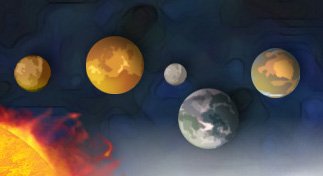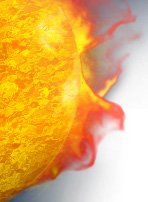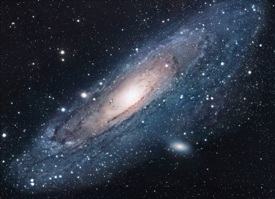 |  |  |

A galaxy is a collection of stars held together as a group by gravity. The Milky Way galaxy is the galaxy we live in and it is classified as a "spiral" galaxy. There are 3 types of space galaxies; spiral, elliptical, and irregular. You guessed it... these names are based on the shape a galaxy takes!
Spiral galaxies, such as our galaxy, take on a spiral shape and appear to be "swirling" as a group in outer space. Elliptical galaxies resemble a "flattened ball" or circular formation, the stars found in elliptical galaxies are also much older than those in spiral galaxies.
In 1924 the famous astronomer Edwin Hubble proved the existence of several other far off galaxies. Little did he know just how many! In 1977 NASA starting building their most advanced space telescope ever and named it after Edwin. The Hubble Telescope was launched in 1990 and still orbits outside Earth's atmosphere today.
Not only has the Hubble Telescope confirmed the existence of other galaxies, but it has provided images that will help us understand exactly how big the universe really is. Hubble's "Ultra Deep Field" image revealed more than 10,000 new galaxies! Astronomers now estimate the existence of BILLIONS of galaxies!
|

